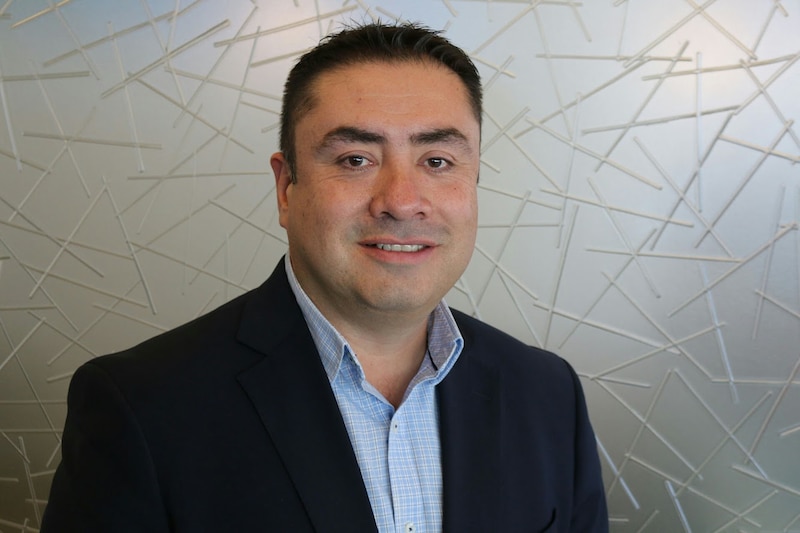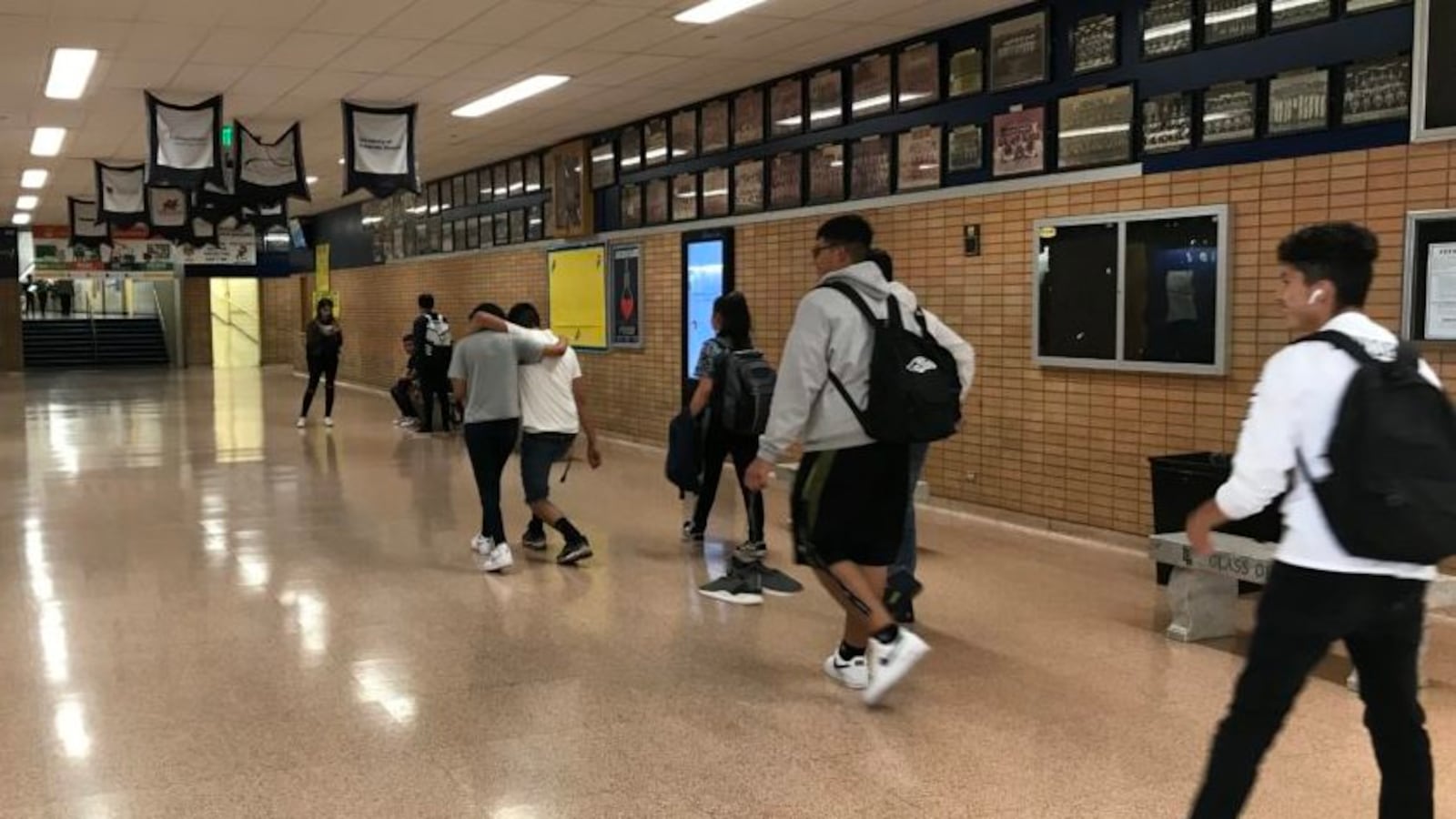Antonio Esquibel has come home again. A graduate of Denver’s Abraham Lincoln High School, Esquibel returned this fall for a second stint as principal. His mission is strikingly similar to the last time he was principal: boost academic rigor in hopes that test scores will follow.
“I want to make sure families in this community understand we have high expectations, and we’re going to provide kids with rigorous coursework,” Esquibel said.
The stakes are arguably higher this time. Lincoln, which serves about 950 students in southwest Denver, is one of two Denver high schools that could face state intervention after several years of persistently low test scores. The other is Manual High School, which serves about 300 students in northeast Denver. PSAT and SAT scores at both schools this past spring were far below the state average and among the lowest in Denver Public Schools.
Even so, the news that Lincoln was on the state’s “accountability clock” for low performance came as a surprise to some teachers. Schools “on the clock” can face intervention that ranges from having to write an improvement plan and win state approval for it, to school closure.
“My first reaction was definitely shock,” said Gabe Guerrero, who teaches English, theater, and SAT prep. “The prior administration told us, ‘We’re improving. It’s not going to be a problem.’”
But when the Colorado Department of Education issued preliminary school ratings late this summer, Lincoln’s test scores once again earned it an “orange” rating, the state’s second-lowest. If the preliminary state rating is finalized later this year, it will be Lincoln’s fifth low rating in a row, which will trigger a hearing before the State Board of Education.
Denver has traditionally had its own process for dealing with low-performing schools. Lincoln and Manual will be the first Denver schools to appear before the State Board under the current accountability system.
Esquibel isn’t waiting. His plan to improve Lincoln starts with him and the other administrators being visible, walking the halls and popping into classrooms to observe, coach, push, and encourage. The first day of school, his Fitbit reported that he’d walked 9.8 miles.
“We need to make sure everybody understands, ‘What does quality instruction look like? What does quality learning look like?’” he said. “And it’s my responsibility to ensure that’s happening.”

Esquibel grew up in the neighborhood, which is home to many Hispanic families. After graduating from Lincoln, he returned as a teacher and worked his way up to become principal in 2006. At the time, he said, Lincoln was pioneering programs that allowed students to earn college credit while in high school, a practice that has since become widespread.
But test scores were lagging, he said, and enthusiasm was low.
“Kids were not wanting to come, and parents were not excited,” Esquibel said.
To raise academic expectations for students, Esquibel said he added more honors, Advanced Placement, and concurrent enrollment college courses, selling parents on the idea that their children could get a head start on college while in high school.
To better support students, he started a “freshman academy” that split the ninth grade class into smaller teams, allowing them to get more attention from teachers. To improve safety at a time when many families were worried about gangs, he required students to wear uniforms.
And because Lincoln serves a largely Spanish-speaking student population, many of whom are learning English as a second language, he said he spent a lot of time making sure his teachers were trained in the best strategies for teaching second-language learners.
By the time he left Lincoln in 2011, the school’s enrollment had grown by about 500 students to 1,930, making it the second-largest high school in Denver behind behemoth East High. Esquibel said test scores had improved, too, earning Lincoln a solidly middle-of-the-pack “yellow” rating.
Esquibel left Lincoln to work for the district’s central administration, most recently as executive director of college and career readiness. In the intervening eight years, Lincoln’s rating declined and its enrollment dropped by half. Excess space in the building was given to a charter school, despite protests from students and parents who called for the district to “fix Lincoln first.”
A recent graduate named Mitzy, who asked that we not use her last name, transferred to Lincoln from Mexico her freshman year. The students and teachers were helpful and nice, she said, but she always felt Lincoln was playing “the game of the numbers.” Instead of teaching content, she said administrators pushed students to learn strategies to score higher on tests.
“They only care about scores because it’s what makes the school look good,” Mitzy, 17, said.
Mitzy also said the rules intended to keep students on track were too harsh. Some of her friends who’d earned diplomas couldn’t walk in their graduation ceremony this past spring because they had too many absences under the school’s attendance policy, she said.
At a school board meeting in May, a group of students, parents, and teachers testified about what they called “underground push-out” at Lincoln. They said administrators pressured students and their parents to sign attendance contracts — and if the students fell short, the administrators pushed them to leave Lincoln for a dropout recovery school.
“As a student, I had problems like any other student,” Alejandra Retana testified that night. “But the Lincoln administration saw those problems as a threat and tried to push me out of school.”
Larry Irvin, the former principal at Lincoln, is now principal at Aurora’s Hinkley High School. He did not return messages left with his secretary and a district spokesman.
Esquibel was at the school board meeting that night, too. He addressed the group, telling them that the push-out they described did not happen in the five years he was principal.
“Our goal back then was to … graduate students and get them college-ready, and we did that,” Esquibel said. “And that’s why I’m coming back to Lincoln.”
Among his priorities this year, he said, will be making sure all students, even those who are behind, are doing grade-level work instead of simplified assignments. He also hopes to revamp the school’s career and technical course offerings, and boost concurrent enrollment classes so every student can graduate with at least 12 college credits or an industry certificate.
He plans to bring back the “freshman academy” that was successful during his last tenure, and reinstate a set of positive behavior expectations nicknamed “the Lincoln way.” And he’s investing in training to help teachers better understand and connect with students who come from different cultural backgrounds, with the first focused on Native American students.
“The stronger connections we have with kids, the more we can personalize their learning, I know that attendance will increase,” Esquibel said.
The district is also supporting Lincoln and Manual to work with the University of Virginia, which runs a school turnaround program that has consulted on other Denver schools.
Mitzy recently returned to Lincoln for a visit, and she said the difference — the sense of connection between students and staff — was palpable. Teachers said they feel it, too.
“It feels so much better,” English teacher Guerrero said. “It feels like a community again.”

